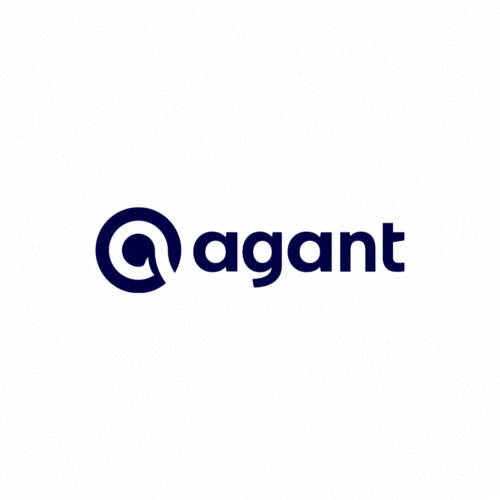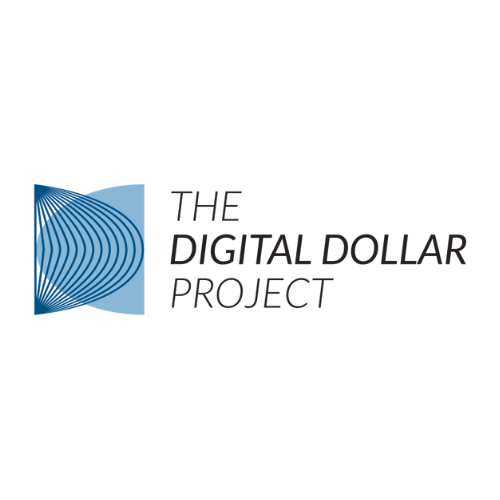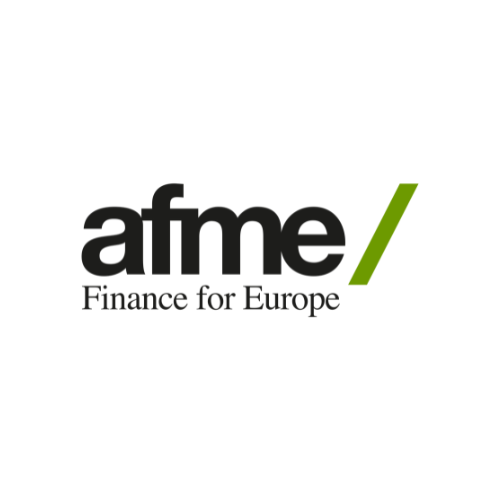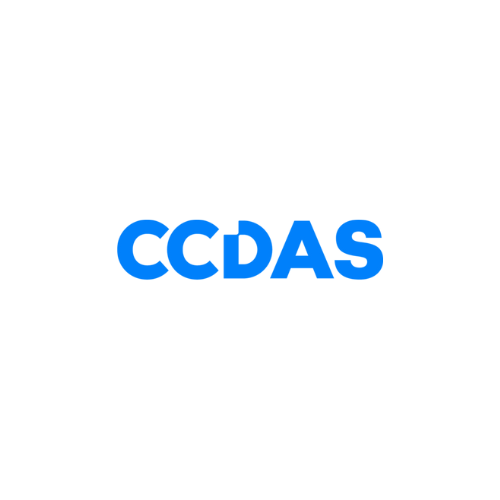The Digital Pound Foundation (DPF) welcomes the opportunity to respond to the Bank of England’s (the Bank’s) Discussion Paper on the Regulatory regime for systemic payment systems using stablecoins and related service providers (the “Discussion Paper”).
The DPF’s stated remit is to advocate for and support the implementation of a well-designed digital Pound, in both publicly and privately issued forms, and a diverse, effective and competitive ecosystem for these new forms of digital money in the UK. We believe that a digital Pound – in either / both public or private form – will form an integral and important part of the future UK payments landscape, and a critical determining factor in the UK’s continued leadership in financial services and Fintech at a global level. As such, we appreciate the chance to share our thoughts and expertise on the future of systemic payments systems using stablecoins.
The DPF’s members are uniquely qualified and positioned to contribute to the discussion around these topics, given their active involvement and engagement in the development of new forms of digital money – whether as professional service and technology providers for CBDC projects, private issuers of digital money, or firms whose business models depend on the existence of new forms of digital money. Our response to this Discussion Paper has also been developed in close collaboration with our partners, Global Digital Finance and Stablecoin Standard.
Our response is therefore informed by a collection of forward-looking viewpoints and an active envisaging of the future of the payments landscape, the ecosystem of new forms of digital money and of the potential future interaction and interoperability between different payments market participants, payments infrastructures and different forms of money.
In formulating our response to the Discussion Paper, our members have identified the following key areas which we believe require more careful consideration on the Bank’s part, as it develops its final proposals, given their complexity and the potential for unintended consequences to arise:
- Greater clarity is needed on what is deemed to be “systemic” – We are supportive of the proposed aims of designating certain stablecoins which may have a large impact on financial stability, markets, and retail and wholesale consumers as systemic. However, we believe further clarity is needed on what exactly the approach to determining systemic status is and how it would be applied in practice. We would encourage additional detail be provided in future phases of the regulatory framework on the scope of the regime, on how systemic importance will be assessed, who would be captured by the regime, how it would be applied, and at what stage of a company’s growth compliance with different aspects of the Bank’s regime would be required. We also believe there is a danger of cliff edge risks when transitioning from non-systemic to systemic that should be carefully considered. This is further discussed in our responses to Questions 4 and 5.
- Clear delineation of the scope and application of the regime to a realistic range of business models – We would note that as they exist today, stablecoins have multiple use cases beyond payments, including but not limited to trading, investment, as a store of value, and as collateral to transactions. As such, we would encourage the Bank to make clear delineations on what the framework will capture. If a stablecoin is issued, it could potentially be used for either payment or other purposes whether or not it is intended for that purpose by their issuers. There may also be stablecoins that emerge as systemic, in some form, but are not used widely for payments – for example, those used in wholesale contexts. We urge that stablecoins that are not used for systemic retail payments such as these would be excluded from the proposals. We would welcome clarification that should such a stablecoin emerge that is widely used for purposes other than payments, the Bank would not seek to regulate it (or, for example, its issuer), given the framework under the Banking Act 2009 is intended for payments firms. This is also further discussed in our response to Questions 4 and 5.
In our view, clear delineation of the scope of the proposed regulatory framework is required. Throughout the Discussion Paper, reference is made to issuers of stablecoins used in systemic payment systems, systemic stablecoins used in payment systems, and systemic payment systems using stablecoins to the extent that it is unclear to which activities or entities the proposed regulatory framework would apply. We observe that there appears to be an implicit assumption that a stablecoin issuer will also be the operator of a payment system, and the predication of much of the proposed framework on this assumption has both commercial and regulatory implications for stablecoin business models
- Cliff-edge risks arising from the transition from non-systemic to systemic status – The cliff-edge risk for firms transitioning from the non-systemic to systemic regimes is potentially significant, given the proposed narrowing of backing assets, the fact that cash reserves are not remunerated, and the potential imposition of limits. An issuer may need to completely overhaul its business model, treasury and risk management capability, and operations, in order to comply with the systemic regime. At an extreme, this could disincentivise non-UK issuers from establishing themselves in the UK and from offering services to UK clients, which could have unintended negative consequences for UK businesses and consumers who are not able to access more efficient, lower-cost and innovative payments networks and services. We would encourage the Bank to work closely with firms throughout the process and make requirements clear in advance to support an orderly transition process. This is further discussed throughout our response and in our response to Question 3.
- Further consideration of the proposed regime for backing assets – Mandating that systemic stablecoin issuers may only use backing assets in the form of cash reserves held (on a non-interest accruing basis) at the central bank would be extremely limiting to business models and have significant impact on the potential commercial viability of systemic stablecoin-based business models in the UK, particularly in the case where an issuer is not itself also the vertically integrated operator of a payment system, but rather issues a stablecoin and makes it available to one or more payment systems for use as a means of payment or of value transfer across the network. The operator of a payment system may potentially generate revenue from access fees or transaction fees, but the potential commercial incentives for an issuer remain unclear.
We wholly support the development of a framework that mandates appropriate and proportionate risk management with respect to backing assets. We are supportive of a regime for backing assets that requires a mixture of cash and cash-equivalent HQLA, and it would be reasonable to expect these to be GBP-denominated in order to minimise FX risk.
We also question the difference between a stablecoin fully backed by cash reserves held at a central bank, and a synthetic CBDC, and would welcome further clarification on why such a stablecoin would not be regarded as a synthetic CBDC.
- Further consideration of the recommendations for capital buffers – We broadly agree with the principle that capital requirements are a necessary and integral component in a risk management framework that addresses the potential vulnerability of coinholders to a stablecoin issuer having a shortfall in backing assets, or any threat to the issuer’s or payment system operator’s ability to operate as a going concern. We are however concerned that the proposals in their current form conflate the issuer and the payment system operator and implicitly assume them to be a single entity, and would strongly advocate on greater clarification of the capital requirements applicable to each, bearing in mind that they would not necessarily be the same legal entity or within the same Group of entities. In our response to Question 20, we also examine the practical implications of the current proposals in the context of stablecoin-specific models.
- Greater clarity on limits and their usage – Restricting the ability to remunerate to banks only provides banks with a competitive basis on which to attract deposits and long term savings. However, when taken into consideration alongside the proposed introduction of holding limits, this has the potential to create an unfair competitive disadvantage for non-banks in the longer term. We are not, however, in favour of the prolonged long-term use of limits as a means of managing this risk. In our view, continued use of limits to disincentivise consumers from large-scale holdings of stablecoins will, in our view, only serve to disincentivise banks from offering genuinely competitive account rates and services, thus ultimately distorting the market and delivering sub-optimal consumer outcomes.
- Cross-border considerations and international openness – Consideration should be given as to how the Bank’s proposals might impact the attractiveness of the UK market. At one extreme, issuers may be disincentivised to establish UK operations if they are deemed not to be commercially viable, or to require a level of business model adaptation that sits at odds with other regulatory regimes globally. There is a potential risk that non-sterling denominated stablecoins issued in other jurisdictions may become used, at scale, for certain retail purposes in the UK. Overall, the practical implementation would need specificity and greater clarity in order to avoid perverse outcomes for consumers.
We also note the importance of ensuring that local UK requirements are aligned with those of other jurisdictions implementing the PFMIs in their stablecoin regulatory frameworks. A framework that cannot usefully interoperate with those of other major jurisdictions risks isolating the UK as both a destination for issuers and service providers, and depriving UK consumers and businesses of the potential benefits of these new forms of digital money.
Discussion Paper Response
Question 1
Do you agree that, to preserve the singleness of money, systemic payment stablecoins must be fully interchangeable with other forms of money at par?
Yes, we agree that, to preserve the singleness of money, systemic payment stablecoins must be fully interchangeable with other forms of money at par, and that a primary goal of any regulatory framework encompassing systemic payment stablecoins should be to ensure that this ability is delivered.
The DPF envisages a future in which multiple different forms of money – both public and private, and both those currently in use as well as new forms of digital money – coexist. Each has the potential to fill a different niche in the ecosystem and to provide enhanced consumer and business choices, arising from their different characteristics, the technical functionality that they offer, the nature of their issuers and the risk (both real and perceived) attached to them as a consequence of all of these taken together. In order for our vision of a diverse, competitive and effective ecosystem for new forms of digital money to become a reality, seamless interoperability, convertibility, and – above all else – preservation of the singleness of a digital Pound in all its varied formats, will be required. Just as bank deposits can today be converted into cash, or e-money into bank deposits, the future evolution of money and payments will require equally seamless, trusted and invisible conversion between cash, bank deposits, e-money and new forms of public and private digital money.
Question 2
Do you have views on further requirements that may be needed to ensure the singleness of money when stablecoins are traded in secondary markets?
We question the characterisation of systemic stablecoins as being “traded” on secondary markets. If a primary goal of any regulatory framework governing systemic payment stablecoins is that they should be fully interchangeable with other forms of money at par, thus preserving the singleness of money, then a systemic payment stablecoin should be regarded as, to all intents and purposes, “money”. We see three scenarios in which such regulated systemic payment stablecoins could be “traded” on a secondary market:
If such a stablecoin is being used to settle a transaction on an exchange (be that transaction in a security (tokenised or otherwise), derivatives contract or cryptocurrency), then it is not being “traded”; rather, it is a settlement asset and should be treated as such. In this case it is possible that traders might price in stablecoin settlement as being more efficient and reliable – carrying a lower inherent settlement risk – and thus price the instrument being traded at a discount. Members observe that it would be no surprise at all to see different settlement asset rankings priced in, in the long-term, between commercial bank money, a systemic stablecoin and/or a CBDC. This would not however impact the value of the stablecoin itself.
Similarly, if one systemic payment stablecoin is being exchanged for another stablecoin of another currency on an exchange, it is most closely analogous to an FX transaction, in which case its value against the other currency could fluctuate in line with FX exchange rates. There is a possibility in this case that a GBP / USD stablecoin pair may trade at a slightly different spread to a traditional spot FX GBP / USD pair; however, should this occur, an opportunity for arbitrage will arise and the market will correct any discrepancy in trading values.
Finally, a GBP-denominated systemic payment stablecoin could be exchanged for another form of GBP – such as GBP-denominated systemic payment stablecoin having another issuer, or for a GBP CBDC, or paid out as GBP funds in a bank account. In this case, this involves the conversion of one form of money into another, which should always be at par as per our response to Question 1 above.
Question 3
Do you agree that the most likely, and suitable, payment systems using new forms of digital money to become systemic in the UK are sterling-denominated stablecoins which are backed by assets denominated in fiat currency?
We have broken our thinking on this question down into two parts: firstly, whether it is likely and suitable that a payment system using a sterling-denominated stablecoin will become systemic in the UK, and secondly, the extent to which it is likely and suitable that such a stablecoin will be backed by assets denominated in fiat currency.
Assuming that the average consumer would not want to factor in FX risk to their payments, it is highly likely that a stablecoin-based payment system that is widely adopted by consumers and businesses for payments purposes in the UK – and is taken up at such scale that it is deemed to be systemic – will be GBP-denominated. This would be most suitable as well for widespread use by retail consumers, again given that it does not require consumers or businesses to manage FX risk associated with payments for their everyday retail transactions.
The above does not preclude the possibility that a payment system based on a non-GBP-denominated stablecoin or stablecoins may gain some uptake as a means of payment on certain platforms or within certain retail ecosystems, and that, in the absence of an appropriate GBP-denominated solution, this could effectively become a systemic payment system. The Bank should consider the extent to which this is possible, and / or desirable. Our view is that the timely introduction of an innovation-friendly regulatory framework for stablecoins (of both systemic and non-systemic natures) will help to avoid such a scenario from arising.
Turning now to the question of whether a stablecoin used in a systemic stablecoin system will and should be denominated in assets denominated in fiat currency, we agree that it likely would – and should – be backed by high-quality liquid assets (HQLA) denominated in a fiat currency. However, we believe that further consideration should be made as to the nature of such permissible HQLA – a point which we will address further in our response to Question 5 and Question 11.
We note as well that it is not clear that stablecoins used for retail payments purposes will be the first stablecoins to emerge in the UK, and far likelier that, at a systemic level, we may see stablecoins being used for other financial functions than payments (such as settlement of digital asset / tokenised asset transactions).
Finally, as an aside, one of our members expresses interest in the Bank’s continued reference to a future stablecoin ecosystem as a “payment system”, and therefore drawing analogies to the other Recognised Payment System Operators (RPSOs) that it regulates. Logically, a well-constructed stablecoin environment could have its baseline ledgers and then utilise existing payment rails if these were to accommodate alternative privately issued forms of a pound Sterling. With open banking rails, a bank’s payment app could then allow a consumer to pay for goods or services using either their bank account or a stablecoin wallet, which in turn then uses the payment message to highlight the different source of funding. The recipient entity would then account for these accordingly.
Question 4
Do you agree with the Bank’s proposed approach to assessing the systemic importance of stablecoins used for payments?
While we are supportive of the proposed aims, we believe that further clarity is required on what exactly the approach to assessing the systemic importance of stablecoins used for payments entails, and how it would be applied in practice. Additional detail is needed on the scope of the proposed regime, on how systemic importance will be assessed, who would be captured by the regime, how it would be applied, at what stage of a company’s growth compliance with different aspects of the regime for systemic stablecoins would be required. Furthermore, as discussed throughout our response, there is a danger of cliff edge risks arising for firms when transitioning, from the regime for non-systemic stablecoins to that for systemic stablecoins, that should be carefully considered.
Expanding on this point, we believe it is crucial to clarify specific thresholds at which a payment stablecoin is deemed to be systemic, in the form of criteria for issuance, distribution, usage and circulation that it should meet. We would also welcome further clarity around the point at which, prior to crossing such thresholds – or at what point after crossing these thresholds – a payment system must comply with requirements for systemic payment stablecoins and how this process and transition could be managed.
For example, within Box E it is noted that the Bank shall consider “the number and value of the transactions that the system presently processes or is likely to process in the future”. A stablecoin-based payment system operator may find it difficult to develop an appropriate regulatory strategy and roadmap unless such criteria are more concretely defined, and clarity is provided as to how far in the future these projections may be made. Given that significant changes to a stablecoin-based payment system operator’s business model may be needed as it transitions from non-systemic to systemic regulatory regimes, it would be beneficial to understand the timelines of the projections on which it is being assessed.
We observe that, if we look at the table of volumes / values currently processed by the existing recognised systemic payment systems (see Payment Statistics November 2023 | Pay.UK), we think it is very unlikely that a commercially operated stablecoin would reach these levels. As such, what percentage / level of these figures might the Bank consider as constituting a systemic threshold?
The Discussion Paper also notes that the nature of the transaction, and whether it is wholesale or retail, will be assessed. As the focus of this regime is on retail payment systems using stablecoins, this seems to be an unnecessary assessment factor. The usage of the stablecoin for retail purposes alone should be sufficient to determine its inclusion in a regime for retail payments systems. Furthermore, as discussed further in our response to Question 5, it is possible – and highly likely – that the same stablecoin may be used for both retail and wholesale purposes in different systems. The Discussion Paper suggests a future regime that may “prevent(s) stablecoins from performing other functions, such as lending or investment” – which, in our view, is at odds with the nature, purpose, and use of stablecoins (or indeed existing forms of money) at present.
We would note that as the market exists today, stablecoins are not established uniquely as payment instruments, so to treat them exclusively as such and to expect them to behave exclusively as such is inconsistent with the reality of the market. Furthermore, from the perspective of competition, it is likely that it would be neither attractive nor feasible for most existing stablecoins and their issuers to design a stablecoin specific for the UK market nor one that is limited to payment purposes. As such, we would encourage the Bank to further consider how any future framework may apply or not apply to stablecoins in the broad sense, and at what point in the value chain it is feasible to draw the distinction between wholesale and retail (or other) usages and to apply payments regulation. We also observe that, since the Bank itself now manages the only wholesale payment system in the UK (i.e. CHAPS) and submits itself (on a voluntary framework) to the same regulatory approach, for a stablecoin to become systemic on a wholesale basis, the values transmitted per day would need to be very substantive. We would welcome clarification that should a stablecoin emerge that is widely used for purposes other than payments, the Bank would not seek to regulate it (or, for example, its issuer), given the framework under the Banking Act 2009 is intended for payments firms.
Members also query whether transactions in a given stablecoin would count towards the threshold for that stablecoin to be deemed systemic, if those transactions were to occur on existing payment rails where, in the event of an “outage” or other incident, it would be possible for consumers / users to easily revert back to “traditional” payments, given that often, one of the key criteria for determining “systemic-ness” is where there is no other alternative available, or where (in this case) the payment instrument is not easily substitutable.
In our view, clear delineation of the scope of the proposed regulatory framework is required. Throughout the Discussion Paper, reference is made to issuers of stablecoins used in systemic payment systems, systemic stablecoins used in payment systems, and systemic payment systems using stablecoins to the extent that it is unclear to which activities or entities the proposed regulatory framework would apply. We observe that there appears to be an implicit assumption that a stablecoin issuer will also be the operator of a payment system, and the predication of much of the proposed framework on this assumption has both commercial and regulatory implications for stablecoin business models.
There are a number of scenarios that must be considered when defining the thresholds and criteria which bring an entity undertaking activities with respect to stablecoins into the perimeter for this regulatory framework. Examples of such scenarios include:
- A single issuer making its stablecoin available for use in multiple payment systems.
- In this case, is the issuer considered to be systemically important based on the aggregate activity across all payment systems? Or is the use of the stablecoin within each system the deciding factor as to whether the payment system operator is brought into scope?
- A single issuer making its stablecoin available for both retail and wholesale purposes.
- Whilst it makes sense to restrict retail payment usage of the stablecoin to retail payment systems, there should be no restriction on use of the same stablecoin for wholesale purposes in wholesale trading and settlement systems. In this case, we do not believe that the wholesale usage of such a stablecoin should be counted towards it meeting the thresholds for retail systemic payment usage (assuming that the systemic determination is made at issuer level).
- A single retail payment system that makes use of multiple stablecoins to transfer value across the network.
- In this case, is it the aggregate transaction activity across the system that brings all individual stablecoin issuers – and the operator of the payment system – into scope as systemic? Or is it the activity associated with a single stablecoin that brings the specific stablecoin issuer – and the operator of the payment system – into scope?
Finally, given the very broad discretion that HMT and the Bank have in designating or specifying firms so as to bring them within scope of its regulation, and recognising that these assessments will necessarily be firm- and fact-specific, we would welcome the introduction of a clear and transparent process under which firms could seek indicative assessments from the Bank as to whether or not they are likely be considered systemic, and the key indicators particular to their business that would lead to a designation as systemic. This could take the form of a “no action letter” style process in which the Bank could specify, with respect to a firm’s specific business model and growth plans, the conditions under which the Bank would be likely to continue to consider the firm non-systemic. Those assessments (or – potentially anonymised – summaries thereof) could then be made public, creating a bank of precedents that would provide clarity to the industry on how the HMT and the Bank were approaching their assessments and determinations of systemic status.
Question 5
Do you agree with the Bank’s proposed approach to the regulatory framework for systemic payment stablecoins, as set out in Section 2?
While the DPF is supportive of the aims of the proposed framework, we believe that further consideration is required in order to develop an effective and proportionate approach to regulation that addresses the reality of prospective business models that might evolve both in the UK and globally, and delivers an environment that maintains the UK status as a global leader in financial services and Fintech.
As a general comment, we are supportive of the Bank’s objectives in maintaining a clear differentiation and delineation between the activities and regulatory status of banks, versus those of stablecoin issuers (although we note that commercial banks may themselves wish to become stablecoin issuers, and in this eventuality, the PRA’s “Dear CEO” letter on the topic of bank-issued stablecoins would become relevant). In our view, it is not the level or type of risk taken on by the issuer that distinguishes it from a bank; rather, it is the ability of a bank to create credit through its engagement in fractional reserve banking that is the key differentiator. A firm that proposed to issue digital money through origination of loans, where that digital money is fractionally backed by reserves and other assets, would, by definition, be a bank, and should be regulated as such. We therefore respectfully disagree with the objective of “equivalent standards as those applicable to commercial bank money” that is set out in the Discussion Paper (p33). Whilst it is imperative that the objectives of maintaining the singleness of money, financial stability and consumer protection be embedded in the regulatory framework for systemic stablecoins, the standards around risk management – and backing assets in particular – should be proportionate to the nature of the activities being undertaken – which, by any measure, will be less risky, not more so, than those undertaken by commercial banks in the course of credit creation through fractional reserve banking.
Firstly, as per our response to Question 4, we believe that it is crucial to clarify what exactly is meant by “systemic” in the context of stablecoin issuance and their usage for payments transactions. We would welcome the provision of further detailed guidance on the thresholds, metrics and criteria that will determine a “systemic” classification – of either a stablecoin and its issuer, or a retail payment system utilising stablecoins, or both, as well as the extent to which these metrics may vary from those currently used to assess the systemic impact and status of existing payment systems. Also as per our response to Question 4, firms will require further clarity around the point at which, prior to being classified as systemic – or at what point after being classified as systemic – an issuer and / or payment system must comply with the applicable regulatory requirements.
Secondly, we believe that the proposed regime could be more flexible to accommodate different business models and structures, without compromising on proportionate and appropriate risk management requirements. Mandating in-scope stablecoins to be 100% backed by reserves held at the central bank – specifically where these reserves do not earn interests – creates a number of potential constraints on business models:
- It implies that the only means of revenue generation for operators of system payment systems using stablecoins would be access fees or transaction fees. This would sit at odds with the revenue generation models that exist in today’s market, with respect to the more widely used stablecoins.
- It also implicitly assumes that the issuer of the stablecoin and the operator of a systemic payment system using the stablecoin will be the same entity or within the same Group of entities – this is given the fact that there is little to no scope for an independent issuer to generate revenues other than those derived from network access or transaction fees.
- The proposed FCA rules for assets backing non-systemic stablecoins include a slightly wider range of HQLA, including not only cash reserves but also short-term UK government debt having a maturity not exceeding one year. Whilst still not a broad range, this nevertheless leaves the door ajar for issuers to generate revenue based on the income accruing to their backing assets under management (a model which is in line with that of the majority of reserve-backed stablecoin issuers today). As an issuer transitions from systemic to non-systemic, cliff-edge risks may arise from the discrepancy between the two regimes for backing assets.
For example, significant changes would be needed to the firm’s business model under the current proposals, as they transition from non-systemic to systemic regimes. For an issuer operating at a non-systemic level, they could have a model whereby they are able to hold a combination of eligible HQLA and cash reserves as backing assets, generating income off the assets (and thus lowering – if not eliminating – transaction fees with the associated benefits to businesses and consumers). When the same issuer transitions to the systemic level, however, they would not only need to change their entire treasury management model and function, but also would be restricted to generating income from transaction fees or access fees (assuming they are able to capture these from the operator of the payment system on which the stablecoin is used). This would be a significant burden that may also have the unintended consequence of discouraging issuers from becoming systemic.
- In addition, it creates an unequal playing field on competition grounds. Banks can earn interest on reserves held at the central bank, and e-money issuers can earn interest on HQLA or commercial bank deposits held to address their safeguarding obligations. The prohibition on remuneration of stablecoin backing asset reserves seems arbitrary and unduly restrictive. We also question the logic – and potential cliff-edge risk associated with – non-systemic stablecoin issuers being able to earn remuneration on some underlying assets, whilst this is essentially prohibited for systemic issuers under the current proposals (particularly given they would likely have a far higher cost-base, given the regulatory requirements the Bank is proposing).
Thirdly, we would raise the issue that there seems to be a potentially arbitrary distinction being drawn between stablecoins used for retail and wholesale purposes. A stablecoin could potentially be used for both retail and wholesale purposes. As discussed further in our response to Question 5, it is possible – and in our view, highly likely, should a stablecoin backed entirely by reserves held at the central bank be made available – that the same stablecoin may be used for both retail and wholesale purposes in different systems. A stablecoin wholly backed by reserves held at the central bank – a synthetic CBDC in effect – would be hugely appealing to wholesale markets in a number of use cases. In this context, the proposal to constrain wholesale use of stablecoins used in retail systemic payment systems by placing a cap on transaction sizes makes little sense. We agree that a retail payment system should not be used for wholesale settlements; notwithstanding this, there should, in our view, not be any artificial constraint created on the use of an appropriately regulated and structured stablecoin in both retail and wholesale regulated systems.
Fourthly, we would also note that further clarity is needed around the designation and role of the “systemic risk manager”. We observe that the Bank appears to be using the existing nomenclature in use for existing recognised payment schemes (which are each deemed as Scheme Operators and Systemic Risk Managers). It is unclear how the designation of a systemic risk manager in the context of the stablecoin payments chain would work in practice, and who would take on the responsibility.
Finally, the current proposal also appears to contain an implicit assumption that a stablecoin will be used in only one systemic payment system; this is in our view a presupposition of the actual business models and payment market structures that may emerge.
Question 6
Do you agree with the Bank’s assessment of the risks posed by vertical integration of stablecoin functions? Are there other risks that the Bank should consider based on existing business models? What mitigants could be put in place to ensure that risks posed by multi-function entities are addressed?
We broadly agree that vertical integration of stablecoin functions across a single entity or Group, if not appropriately managed, can lead to vulnerabilities, including conflicts of interest, inadequate safeguarding of clients’ funds and assets, as well as complex and potentially reinforcing risk profiles. We agree that, in line with the PFMIs, systemic payment systems using stablecoins should be required to focus particular attention on certain aspects of their governance and risk management arrangements to address the risks posed by vertical integration. We agree that it would be sensible for these arrangements to potentially include legally separating the non-stablecoin services that a multi-function entity provides, if those services present a distinct risk profile from, and potentially pose significant additional risks to, the activities performed within the stablecoin payment chain. We also broadly agree that in some circumstances it may be appropriate that the Bank require the issuer to form a legal entity that is sufficiently financially, operationally, and organisationally separate from other entities in the wider group, so that it is bankruptcy remote.
Particularly in light of the above, we do also believe that careful consideration must be given to the nature and viability of business models that can be supported by such a regulatory framework. As per our response to Question 5 above, in many cases there appears to be an implicit assumption of vertical integration in order to support viable commercial business models, should these be limited to generating revenue from access and transaction fees. The regulatory framework for systemic stablecoin issuers and payment systems using systemic stablecoins should be constructed in such a way that there remain viable commercial incentives for each participant in the payment chain.
As per our response to Question 5, cliff-edge risks may also arise should the restrictions and requirements around vertically integrated business models only take effect for systemic firms, as a firm transitions from being non-systemic to systemic.
Question 7
Do you agree with our approach regarding subsidiarisation of non-UK issuers? Do you agree with our approach to other non-UK elements of the payment chain? What alternative policy arrangements could be used to effectively supervise, oversee, and regulate non-UK systemic stablecoin issuers and other non-UK elements of the payment chain?
The DPF is, in principle, supportive of the requirements for subsidiarisation of the non-UK issuers of stablecoins used in UK retail systemic payment systems, noting that a great deal will depend on their practical implementation and interaction with those of other major regimes.
Subsidiarisation as a principle is broadly consistent with the UK’s approach to international firms and their activities, in other areas of financial regulation. However, practical questions remain about the implementation of the approach. For example, we would encourage greater specificity on how the proposed regime would address discrepancies between the business models of potential systemic stablecoin issuers and their non-UK operations versus a putative UK subsidiary that is required to operate under the proposed rules. These rules, in particular those for backing assets, may give rise to a requirement for very different commercial and operating models being implemented in the UK, given the associated constraints around revenue generating activities.
Consideration should therefore be given to how these discrepancies might impact the attractiveness of the UK market. At one extreme, issuers may be disincentivised to establish UK operations if they are deemed not to be commercially viable, or to require a level of business model adaptation that sits at odds with other regulatory regimes globally. There is a potential risk that non-sterling denominated stablecoins issued in other jurisdictions may become used, at scale, for certain retail purposes in the UK. Overall, the practical implementation would need specificity and greater clarity in order to avoid perverse outcomes for consumers.
We also note the importance of ensuring that local UK requirements are aligned with those of other jurisdictions implementing the PFMIs in their stablecoin regulatory frameworks. A framework that cannot usefully interoperate with those of other major jurisdictions risks isolating the UK as both a destination for issuers and service providers, and depriving UK consumers and businesses of the potential benefits of these new forms of digital money.
Question 8
Do you consider that the Bank’s existing binding rules on governance, operational resilience and third-party outsourcing risk management are suitable for systemic payment systems using stablecoins?
Yes, the DPF is supportive of the existing operational resilience framework, as well as those on governance and third-party outsourcing risk management and believes these would be fit for purpose for systemic payment systems using stablecoins as well.
Question 9
Do you consider that stablecoin issuers can exercise sufficient control over, and mitigate the risks of, public permissionless ledgers (be it via rule setting and/or the use of innovative solutions)?
The Bank’s position in the paper clearly indicates an expectation that the “ledger” on which a stablecoin is issued and transacted should be under the singular and direct control of the scheme or payment system operator. We question this restriction, which members think places a different – and substantially more punitive – standard on distributed ledger technologies than it does in the case of other technologies, where the regulated entity is required to prove that they are able to identify and adequately mitigate the risks arising from use of a certain technology.
We would encourage the Bank to first consider permissionless ledgers as a whole, and the role that they currently play in the emerging ecosystem for new forms of digital money, and the wider digital finance ecosystem. In our view, it is neither feasible nor practical for the Bank to seek to regulate the underlying technology layer (the ledger). Instead, it would be practical – as well as consistent with the treatment of other usages of technology such as open source software, and public cloud infrastructure – to apply requirements for risk management, operational resilience and business continuity to the legal entity that is undertaking regulated financial activities.
The Discussion Paper queries whether any entity can have control over permissionless ledgers. In our view, this is not the salient point. No single entity can or should be expected to have control over the ledger, and any framework should not focus at this level. Similarly, in the existing banking system banks are not expected to have control over the totality of the internet infrastructure upon which banking applications run. Instead – as in the current system – requirements should be imposed on the regulated entities that build on top of and use the ledgers so that they properly manage the risks involved.
We are concerned that the imposition of restrictions on the type of the underlying ledger could limit future innovation and prevent solutions from being developed that would appropriately mitigate risks (we note as well the potential role that Layer 2s can play in enabling regulated firms to meet requirements around security and operational resilience. Instead of imposing an outright ban on the future use of public, permissionless distributed ledger technology, we would encourage instead the development of requirements for stablecoin issuers, systemic or otherwise, to demonstrate a process for analysing their visibility, controls, and governance that meet the standards and requirements of UK authorities. In our view, this would mitigate risks and could additionally provide enhanced monitoring and transparency due to the potential for increased visibility arising from the inherent features of blockchain and DLT networks.
Question 10
How do you consider that existing and emerging stablecoin payment chains operating with a public permissionless ledger may be adapted in order to meet the Bank’s expectations and international standards?
We refer to our response to Question 9 – the development of a regulatory framework that was open to the possibility of public permissionless ledgers being used, subject to risks being identified and adequately managed and mitigated, would enable continuity for existing and emerging stablecoin chains operating on public permissioned ledgers, subject to their compliance with these risk management obligations.
Question 11
Do you agree with the Bank’s assessment of the important role of backing assets in ensuring the stability of value of the stablecoin?
Yes, DPF members agree that the role played by backing assets is crucial when it comes to ensuring the stability of value of a stablecoin. However, we also believe that there are some fundamental clarifications that are needed within the assessment and proposed framework.
We agree and fully support the Bank’s requirement that any form of money, if it is to be used with confidence as a means of payment in the UK, must maintain its value at all times and must interchangeable at par for other forms of sterling-denominated money, and that furthermore, the regulatory frameworks governing different forms of money must have amongst their primary goals the preservation of these abilities. However, we also note that stablecoin issuers fundamentally differ in some key ways from commercial banks and their activities around issuance of commercial bank money, and we fundamentally do not believe that it is necessary, desirable or beneficial for stablecoin issuers to be regulated in the same way as commercial banks under the existing banking regime.
As we have briefly discussed in our response to Question 5, the distinguishing feature of credit institutions is their ability to create deposits by making loans / extending credit[1]. An issuer of a systemic stablecoin that is backed by a mixture of HQLA plus cash reserves does not have the same risk profile as a commercial bank as they are not creating fractional-reserve backed deposits through lending activities. The BIS also points out that another distinguishing feature between the two types of money arises from the capability of stablecoins to be bearer instruments, whilst commercial bank money (deposits) – in any form including tokenised deposits – cannot be[2].
Mandating that systemic stablecoin issuers may only use backing assets in the form of cash reserves held (on a non-interest accruing basis) at the central bank would be extremely limiting to business models and have significant impact on the potential commercial viability of systemic stablecoin-based business models in the UK, particularly in the case where an issuer is not itself also the vertically integrated operator of a payment system, but rather issues a stablecoin and makes it available to one or more payment systems for use as a means of payment or of value transfer across the network. The operator of a payment system may potentially generate revenue from access fees or transaction fees, as we have discussed in Question 5, but the potential commercial incentives for an issuer remain unclear.
We wholly support the development of a framework that mandates appropriate and proportionate risk management with respect to backing assets. We are supportive of a regime for backing assets that requires a mixture of cash and cash-equivalent HQLA, and it would be reasonable to expect these to be GBP-denominated in order to minimise FX risk. Parameters could be set around permissible HQLA that would ensure only assets having minimal liquidity, counterparty and market risk exposure could be used as backing assets. Such a regime could also mandate risk management arrangements and methods (including potentially mitigants such as over-collateralisation) that would be proportionate to the level and type of risk taken by the issuer, and firms’ proposals around backing asset composition and management could be individually assessed by the regulator, similar to the current process for advanced model approval. This would not be disproportionately cumbersome, as we do not anticipate that there will be a vast number of issuers at the systemic level. It would however give rise to a greater diversity of business models and a healthy ecosystem for different types of stablecoins.
For example, some issuers may choose in effect to issue a synthetic CBDC that is wholly backed by reserves held at the central bank. Others might choose to use a combination of more conservative permitted HQLA and cash reserves, whilst others might choose more sophisticated risk management methodologies, mitigated in part by an overcollateralisation requirement for certain permitted HQLA.
The Bank comments in the Discussion Paper (page 58) that HQLA-backed stablecoins may be better suited to investment purposes as opposed to payment purposes and that for a stablecoin intended to be used as a means of payment, full backing with central bank reserves is the preferred model. We note that, by definition, the purpose of a stablecoin is to retain a stable value, in this case against a fiat currency, specifically GBP – so they would not be intended to be used as a means of investment. If the regulatory framework for fiat-referenced systemic stablecoins is intended to preserve the singleness of money in a monetary ecosystem that includes such stablecoins, then by definition, a systemic stablecoin in this framework would be money, constituting a store of value, medium of exchange and unit of account. The nature of backing assets does not matter, as long as risk is managed appropriately. We also note that at present, the EMI regime allows for e-money to be backed by a limited range of HQLA.
We also note that the BIS, in its Application of the Principles for Financial Market Infrastructures to stablecoin arrangements, does not in its Guidance preclude the use of HQLA to back stablecoins used in FMIs, subject to such HQLA being selected to minimise credit, liquidity and market risk exposure. Finally, as also noted in our response to the contemporaneous FCA Discussion Paper, other jurisdictions have presented alternative approaches that set a more flexible standard for stablecoin backing assets. The HKMA Proposals for example provide that:
“6.2.2. Investment limitations: The reserve assets must be of high quality and high liquidity with minimal market, credit and concentration risk. Reserve assets should be held in the referenced currency, with flexibility allowed on a case-by-case basis, subject to approval by the MA. In determining the composition of reserve assets, the FRS issuer should take into account the liquidity requirements of the FRS concerned and how the reserve assets will be managed and invested to meet such requirements. The MA will need to be satisfied that the types of investment the FRS issuer proposes to hold are appropriate. In this regard, the FRS issuer should put in place an investment policy for reserve assets that is reviewed for suitability on a sufficiently frequent basis as the FRS business develops.”
Question 12
Do you agree that the proposed remuneration policy is consistent with systemic stablecoins being used primarily for payments?
We understand the Bank’s motivation behind the proposed prohibition on payment of interest to stablecoin holders; this is aligned with proposals in other jurisdictions, such as MiCA in the EU. We agree that, at this stage in their development, the primary usage of stablecoins would be transactional purposes and that there is no current driver for users to hold stablecoins on a large-scale basis as a store of value. Our members do however raise the risk that, in taking this approach, the Bank may in effect be trying to create requirements that result in systemic stablecoins only being used for payments, rather than capturing systemic stablecoins that are being used for payments.
We recognise that in a modern economy in which economic growth is driven by credit creation, and in which the integral role played by commercial banks is to create credit by lending on a fractional reserve basis, significant deposit outflows from commercial banks could have an impact on their ability to perform this credit creation function. Restricting the ability to remunerate to banks only provides banks with a competitive basis on which to attract deposits and long term savings.
However, when taken into consideration alongside the proposed introduction of holding limits, this has the potential to create an unfair competitive disadvantage for non-banks in the longer term. Question 26 elaborates further on our thinking around limits. We would therefore also encourage the Bank to consider options around building flexibility into the regulatory framework. There may be new and emergent business models which could approach remuneration differently, and a future-proof approach would be beneficial for fostering innovation in UK markets.
Members would also welcome further clarity on the nature of the Bank of England “deposit account” in which reserves will be held. What type of account is this “deposit account”? It would not appear to be a reserve account in the traditional sense, as holders of reserve accounts at present are required to be participants in the Sterling Monetary Framework, a status which also brings associated benefits that we do not foreseen, given the Bank’s other comments, that it would necessarily want to extend to stablecoin issuers. It could be an “settlement account” as made available to non-bank firms, or, if the stablecoin issuer is also the operator of a retail systemic payment system, then it could potentially be an omnibus account.
With respect to the Bank’s proposal that interest would not be paid on reserves held in a “deposit account, we also note that, in light of the above and given that the money held in the “deposit account” is somewhat analogous to prefunding for settlement, our understanding at present is that the Bank of England does indeed pay interest on prefunding accounts and likewise with reserve and omnibus accounts – which would make the proposed treatment of reserves held in a central bank account by stablecoin issuers inconsistent with the treatment of these existing account types.
We also note from the recent speech given by Victoria Cleland that the Bank is considering access to central bank money more widely and we understand that a forthcoming consultation paper to be published by the Bank will consider the matter of interest paid on central bank accounts held by non-bank firms. We would urge the Bank to be consistent in its treatment of non-bank firms and their central bank account holdings, and to avoid unfairly singling out stablecoin issuers for unfavourable treatment.
Question 13
Do you agree with the Bank’s proposed requirements on the redemption process, including the role of all firms in the payment chain?
We are broadly supportive of the principle that holders of a systemic stablecoin should be able to convert their stablecoin holdings into commercial bank money (or, in the future, a potential retail CBDC), on demand and at par. In practice, there may be some logistical challenges arising from the Bank’s proposed requirement for such obligations to be met on a same-day basis by the stablecoin issuer, for example:
- The Bank has observed that different market structures might exist, some in which the issuer deals directly with end-customers, and others in which the issuer relies on intermediaries to do so. In the latter case, the Bank proposes that the issuer would remain responsible for meeting these obligations within the specified time constraints. This may be practicably unworkable and requires additional consideration as to the role, regulatory status, and obligations of intermediaries. It may be more feasible and appropriate to consider the imposition of separate timing requirements on the issuer and on the intermediary (assuming that the intermediary itself is a regulated provider of stablecoin services).
- It may be possible, in the case of some institutions providing wallet services, for a redemption request to be made to the wallet provider, and in this case for the provider to meet the request in real-time, by taking on the risk itself. However, this would not be realistic for all types of service provider or business model.
- There are additional challenges that we would also encourage the Bank to consider, such as the fact that holders of stablecoins will not always be customers of the issuer and it may be very difficult to determine the exact number and identity of UK holders. If an issuer is approached by a customer with a redemption request, and that customer has not yet been on-boarded to the issuer or been through appropriate KYC / AML checks, then these may take some time to complete.
- It may be possible to overcome such challenges around KYC / AML by relying on the on-boarding information associated with the wallet in which the stablecoins are held, assuming that the wallet has been provided by a regulated provider of stablecoin services. This would however require more consideration from a regulatory perspective as well as cooperation across industry participants in the development of standards and methodologies for sharing such data with an issuer at the point of redemption.
- We also observe that the current proposed requirement for an issuer to hold all backing assets in the form of funds held at the Bank of England effectively restricts the stablecoin issuer to accessing those funds only during RTGS Operating Hours (currently 6am to 6pm). We would flag this as a potential restricting factor should the Bank expect all requests to be honoured on a same-day basis. Furthermore, in the event of a market stress event, the operator may wish to restrict access in line with their systemic risk management responsibilities
Question 14
Do you have views on requirements on redemption fees, or prohibiting these, to minimise any frictions across the redemption process?
In light of the limited revenue-generation possibilities for stablecoin issuers under the current proposals, we would propose that it would be beneficial (if not necessary) to permit redemption fees to be set at a level to at least cover costs.
Question 15
Can you identify any issues with the requirements on systemic stablecoin issuers and other relevant firms within a payment chain to cooperate and support the appointed administrators with a view to facilitating redemption or payout in the event of a firm failure?
We agree that it is reasonable for the Bank to expect that issuers and other relevant participants in the payments chain should cooperate with administrators or insolvency officials, in the event of an insolvency, to facilitate redemption and payout to all impacted holders of a stablecoin.
We also agree with the proposal that issuers of stablecoins used in systemic payment systems should be required to maintain a recovery and administration plan that included provisions around how redemptions would be fulfilled in the event of a failure of any firm in the payment chain, or failure of the issuer itself.
With respect to the potential inclusion of customer data in any such plan, we reiterate that the issuer of a stablecoin may not always know the identity of all holders of the stablecoin, or the notional amount held by each end user. If we consider stablecoins to be bearer instruments, this is not a workable requirement, particularly where holders self-custody their stablecoins, as may be the case in particular for retail markets. This should be taken into account in the development of more detailed regulatory requirements.
Question 16
Do you agree that issuers should have access to customer information to be able to fulfil redemptions in the case of the failure of an entity providing the customer interface, eg a wallet provider and/or to facilitate a faster payout in insolvency?
It is our view that this proposal requires further clarification and consideration. On the face of it, it seems reasonable that, in the case of its failure, a customer interface entity such as a wallet provider should be able to provide its customer data to the issuer for more efficient redemption and resolution purposes. In practice, there are a range of data protection and privacy considerations that might arise under these circumstances, which would need to be addressed both through the regulatory framework and the contractual documentation which would need to be in place between issuer and wallet provider (which might not even exist).
It should also be noted that provision of the customer data to the issuer may still result in a requirement for the issuer to on-board the customers directly, which could be time-consuming and expensive. Consideration should therefore be given to the prospective timelines and compensation given to the issuer for the additional operational overhead, and how this would work with the wallet provider’s insolvency regime.
Question 17
Do you have views on the Bank’s proposed safeguarding regime being centred on two key features (statutory trust in favour of coinholders; and safeguarding rules)?
We are supportive of a safeguarding regime that protects coinholders’ legal claims and ensures that coinholders can redeem their stablecoins at par value and on demand, at all times.
However, the creation of a statutory trust regime is fundamentally flawed and inconsistent with the existing regulatory framework.
Overlap with Collective Investment Schemes
Section 235 of the Financial Services and Markets Act 2000 (“FSMA”) defines a “collective investment scheme” as an arrangement with respect to property, involving the pooling of assets from various participants, the purpose of which is to enable persons taking part in the arrangement to receive profits or income arising from the property. Crucially, the arrangement must be such that the participants do not have day-to-day control or management of the property, or the property must be managed as a whole.
The Bank proposes that the backing assets must be held on statutory trust for the benefit of the coinholders. The existence of a statutory trust implies that these backing assets are being managed by a third party (i.e., the custodian or issuer) for the community of coinholders. Should this proposal be taken forward, it could not be categorically excluded that this would not qualify as a collective investment scheme. If this is taken forward it is necessary to consider the introduction of suitable exclusions from the definition of collective investment schemes under section 235 FSMA.
Vires for Statutory Trust for Backing Assets
It is unclear that the Bank of England has a rulemaking power that is broad enough to create a statutory trust similar to the power that the FCA has in respect of client money. We note that the FCA’s power is set out in section 137B FSMA and specifically states that their general rulemaking power includes making provisions which results in clients’ money being held on trust in accordance with the rules. In the absence of a similar provision which enables the Bank to create a statutory trust in respect of backing assets, it is unclear on what basis the Bank could create this type of trust.
Identification of Trust Beneficiaries
We note that the intention is to create a statutory trust for the benefit of coinholders. This is problematic because the fiduciary would not be able to identify all coinholders. Stablecoin issuers would typically deal with initial purchasers but could not identify all subsequent coinholder. More generally this would be inconsistent with the way the statutory trust under CASS works. Under CASS the trust is held for distribution purposes and compliance with the rules for the benefit of the “clients” of the relevant firm, for the payment of costs and then for other claims. For a systemic stablecoin, it is possible that beneficiaries cannot be identified for many reasons and so in the event of insolvency, the ability to distribute the trust property would be very complicated and would draw out the process. Further analysis would be required to determine whether such statutory trust could be created validly, as it is unclear that there would be certainty of object.
Other backing assets
As mentioned in our response we would suggest that the Bank permits other HQLA assets to act as backing assets for systemic stablecoins. If this is accepted, the creation of a statutory trust for holding of such backing assets would be completely inconsistent with the current regulatory framework. The ability to hold HQLA as backing assets necessitates some level of connection with the relevant financial market infrastructure. This means that, in practice, the issuer will either need to be a custodian that is connected to financial market infrastructure itself or it will need to appoint a third-party custodian who would be carrying on the activity in Article 40 RAO (safeguarding and administering investments). This activity is currently regulated and subject to stringent requirements under the rules in CASS 6. The creation of a bespoke statutory trust for this activity in relation to systemically important stablecoins would create an unnecessary layer of complexity into the regulatory framework, particularly because currently custodians already hold assets on trust for their clients under their commercial agreements.
Question 18
Do you think there are any other features that need to be reflected in the safeguarding regime for systemic payment stablecoins?
We understand the position in the Discussion Paper to be that:
- Systemic stablecoins must be backed 100% with deposits (the backing assets) held with the central bank. (Please refer to our responses to Questions 5 and 11 which challenge this proposal and offer alternatives).
- The backing assets must be “safeguarded”. The Discussion Paper states that “requiring that issuers back their stablecoins with central bank deposits eliminates the risk that the value of backing assets falls below the value of stablecoins in issuance due to changes in the market value of the backing assets. This will eliminate much, but not all, of the risk that backing assets are insufficient to meet redemptions in full. Other risks will remain. For example, failing to segregate backing assets when new stablecoins are issued may result in other (non-coinholder) creditors having a claim against these assets. Poor record keeping or inadequate reconciliation practices may lead to a shortfall not being recognised.”
We recognise that these are the usual challenges associated with safeguarding. We do have a question however as to whether the proposed “deposit” account for reserves held at the Bank of England will be subject to a statutory trust, given that the funds in that account would, under the current proposals, form 100% of the safeguarded funds? Even in a scenario in which permitted backing assets include a mixture of cash reserves and HQLA, we would expect that a significant proportion of backing assets will be held in the central bank account.
We observe those provisions currently applicable to payment and e-money institutions that hold settlement accounts with the Bank of England, for which the position is set out in the Payment Services Regulations:
8) No person other than the authorised payment institution may have any interest in or right over the relevant funds or relevant assets placed in an account in accordance with paragraph (6)(a) or (b) except as provided by this regulation.
(9) Notwithstanding paragraphs (5), (6), (7)(b) and (8), where an authorised payment institution is a participant in a designated system and the institution holds an account at the Bank of England for the purposes of completing the settlement of transfer orders that have been entered into the designated system on behalf of payment service users—
(a)funds held in the account pending settlement in accordance with the rules or default arrangements of the designated system, in respect of transfer orders that have been entered into the designated system on behalf of payment service users, may continue to be held in the account with relevant funds;
(b)the account, or a specified amount of funds in the account, may be subject to an interest or right in favour of the Bank of England in order to ensure the availability of funds to complete the settlement of transfer orders in accordance with the rules or default arrangements of the designated system;
(c)subject to paragraph (10), funds received into the account by the authorised payment institution upon settlement are to be considered as having been appropriately safeguarded in accordance with this regulation from the time of receipt in the designated system until the time of receipt into the account.
The above changes were made to allow safeguarding accounts to be held with the Bank of England and to meet the requirements of settlement finality. Stablecoin settlement should, of course, be instantaneous when payment and settlement occurs within the stablecoin payment ecosystem, but nothing in the Discussion Paper addresses the matter of settlement finality for stablecoin payment systems or covers the position for settlement between a systemic stablecoin payment system and other payment systems. There is reference made in the paper to future RTGS development and a synchronised interface; nevertheless further clarity on the extent to which interoperability and settlement will be required between multiple systems (inclusive of both stablecoin-based and traditional payment systems) is needed.
Question 19
Do you agree with the requirements for stablecoins owned by the issuers held in treasury wallets?
We understand the rationale that issuers should be required to comply with safeguarding rules so that all stablecoins in issuance – including those held in treasury wallets – are backed in accordance with the final requirements around backing assets.
In our view this construct potentially has a perverse outcome – in the event of a liquidation or other crisis event that requires a repayment of the safeguarded funds the issuing firm benefits from the same protections as other coinholders. We question if this is an equitable outcome particularly if the repayment arises from malfeasance by the issuing firm. We would suggest a prioritisation on repayment of funds to coinholders before any repayment to the issuer itself, and also that such funds be considered then part of the general pool of available funds to be prioritised in an insolvency process across creditors.
Question 20
Do you consider that the capital requirements would effectively mitigate risks that may result in a shortfall in the backing assets or that can threaten the ability of issuers to operate as a going concern?
We read this in the context of the statement in the Discussion Paper that “ the Bank proposes that issuers of stablecoins used in systemic payment systems should hold additional capital against other risks that may result in a shortfall in the backing assets”. With respect to the proposed additional capital requirements, we observe that this is a new consumer protection measure that does not at this time apply in this way to non-bank firms. Given the challenges of safeguarding reconciliation, we can see why it has been proposed, but members note that it adds an additional financial burden for systemic stablecoin issuers that is not commensurate with those imposed on other non-bank firms, and that furthermore, it means that there is a higher standard of protection than provided by the the Deposit Guarantee Scheme or the current safeguarding regime applicable to non bank firms.
That said, we broadly agree with the principle that capital requirements are a necessary and integral component in a risk management framework that addresses the potential vulnerability of coinholders to a stablecoin issuer having a shortfall in backing assets, or any threat to the issuer’s or payment system operator’s ability to operate as a going concern. We are however concerned that the proposals in their current form conflate the issuer and the payment system operator and implicitly assume them to be a single entity, and would strongly advocate on greater clarification of the capital requirements applicable to each, bearing in mind that they would not necessarily be the same legal entity or within the same Group of entities. For example, with respect to the application of the PFMI principles, we observe that these exist to address the risk of operating a systemic infrastructure such as a payment system, whereas the risk associated with issuance is quite different. If we assume that the PFMI approach will apply only to payment systems using a systemic stablecoin (as opposed to the issuer of the stablecoin) then we agree with the logical separation of the two calculations: the capital requirements under the PFMI approach; and the required shortfall reserve assets (with capital requirements for other business risks to be calculated as the PFMI calculation minus the capital funding the shortfall reserve assets).
We agree as well with the Bank’s reasoning that the reserve assets, which are intended to mitigate operational risks and distribution costs, need to meet the same standards as backing assets, and that these assets should be sufficiently liquid so as not to delay either the implementation of a solvent wind-down plan or insolvency proceedings.
That said, we have additional observations in the context of the overall regulatory framework proposals:
- We would encourage consideration of an adjustment to the capital buffer requirements, given that, as per our response to Questions 5 and 11, a stablecoin issuer is not exposed to the same level of risk as a bank. Therefore the imposition of capital buffer requirements in line with those that apply to banks would seem disproportionate when considered against the nature and risk profile of activities undertaken by stablecoin issuers.
- In theory, if the stablecoin is fully backed by cash reserves held at the central bank, there would be zero credit, market and liquidity risk to which the backing assets are exposed (as the Bank itself notes on page 71 of the Discussion Paper), and the primary driver for a capital buffer would be to cover wind-down costs.
- If our suggestion of the prioritisation of repayment of safeguarded funds in Question 19 is viable then any buffer should adjust for safeguarding assets backing treasury coins.
- Regardless of the form that the backing assets might take (for example, if these were widened to include certain permitted HQLA), a stablecoin issuer is still not exposed to the same level of risk as a bank given that it is not engaged in credit creation through fractional reserve banking. Should the final framework make provision for the use of permitted HQLA as backing assets, we would encourage a reconsideration of the capital requirements, as systemic stablecoin issuers are not banks and would still have far lower credit, market and liquidity risk exposures than a bank would be allowed to take.
Question 21
Do you have views on the approach (including any existing or bespoke methodologies) that should be considered for calibrating capital requirements?
Please refer to our response to Question 20.
Question 22
Do you have views on the requirement to hold reserve assets in a statutory trust, to ensure that stablecoins are fully backed and the backing assets are duly protected and available to satisfy coinholders’ redemption requests at all times?
We understand that the Bank proposes that capital would need to be maintained at an appropriate level and held in high-quality and highly liquid assets. As mentioned in our response to Question 17, the creation of a statutory trust for assets that are typically held by a custodian pursuant to Article 40 RAO would be highly disruptive of the current arrangements and would have the effect that the treatment of a particular HQLA could vary where it is held for a stablecoin issuer as opposed to any other market participant.
More generally, it is unclear why a statutory trust would be needed in these circumstances. Clearly the backing assets should provide protection to the coinholders. As set out in the Discussion Paper, the reserve assets are there to enable the stablecoin issuer to cover shortfalls arising from operational issues applying to the backing asset pool. As this is an obligation that the issuer has in respect of the trust property, it seems enough if the reserve assets are held on the balance sheet of the issuer. By creating a statutory trust for the benefit of coinholders, the coinholders are over-collateralised at all times and the issuer has a net capital loss in respect of reserve assets.
The DPF is not supportive of the creation of a statutory trust for reserve assets.
Question 23
Do you have views on the range and quality of the assets issuers would be required to hold to mitigate shortfall risks?
In the context of a proposal that requires full backing of stablecoins in issuance with reserves held at a central bank, there is minimal shortfall risk to the issuer, assuming that appropriate safeguarding controls and reconciliations are in place to ensure that there is always a one-to-one backing of stablecoins in issuance with reserves held at the central bank. It might be prudent to require issuers to hold a very small buffer (< 1 percent) to cover shortfall risk on an intra-day basis, if reconciliations are not undertaken in real-time.
In the context of a potential framework that allowed for backing assets to combine a wider range of HQLA together with minimum level of reserves at the central bank, it would be appropriate to require capital reserves to be held that reflected the level of risk to which the given issuer’s specific range of permitted HQLA exposed that issuer.
Question 24
Do you agree that, at least during a transition, limits would likely be needed for stablecoins used in systemic payment systems, to mitigate financial stability risks stemming from large and rapid outflows of deposits from the banking sector, and risks posed by newly recognised systemic payment systems as they are scaling up?
As per our response to Question 12, we appreciate that adoption of one or more stablecoins at the systemic level could, if not managed, lead to outflows from commercial bank deposits into stablecoin holdings, resulting in lower deposit balances being held with commercial banks and hence posing challenges to the ability of commercial banks to maintain their lending abilities and role in credit creation, all other things being equal. Restricting the ability to remunerate to banks only provides banks with a competitive basis on which to attract deposits and long term savings. However, when taken into consideration alongside the proposed introduction of holding limits, this has the potential to create an unfair competitive disadvantage for non-banks in the longer term.
We are not, however, in favour of the prolonged long-term use of limits as a means of managing this risk. In our view, continued use of limits to disincentivise consumers from large-scale holdings of stablecoins will, in our view, only serve to disincentivise banks from offering genuinely competitive account rates and services, thus ultimately distorting the market and delivering sub-optimal consumer outcomes.
In the longer term, we are of the view that there should be no need for a holding limit for individuals, as we believe that the market should and will find its own equilibrium. Systemic stablecoins may compete against other forms of money, most notably commercial bank deposits, but there are well-established terms on which commercial bank accounts compete with public money in the form of cash holdings today. These include – most significantly – the interest-bearing nature of deposit accounts, which offer the most direct financial incentive to consumers, as well as other services and products based around deposit holdings.
Another solution, as per Table 5.3, might be to cap the total permissible issuance of a given stablecoin, thus managing the maximum exposure of banks to potential deposit outflows at an issuer level. Some of our members believe that this could be the better option, and could assist in the transition from non-systemic to systemic in a phased risk-mitigated manner. With simply the overall issue size under regulatory review, it then does not matter if an individual holds £1 or £1m. Other members, however, consider that this could be deemed anti-competitive and as imposing unfair restrictions on the size and scale of a business and its ability to operate in a commercially viable manner. There is broad consensus that it will be important for the final framework on limits to consider the interaction between the FCA regime and the Bank of England’s regime. The two regimes should aim to avoid the unintended consequence of consumers losing access to their payments services due to misalignment in requirements if a stablecoin or payment system with which they are interacting becomes systemic.
Question 25
Do you have views on the use, calibration and practicalities of limits?
As per our response to Question 24, we are broadly in favour of the use of limits as a temporary financial stability risk management mechanism, although they should be phased out in the longer run. The proposal around firm-specific limits to be set during a defined, short-term mobilisation period could also be a sensible means of managing risk but would need more consideration. It may for example be more suitable for brand new entrants to the market who enter at the systemic level, and less suitable for more established firms.
In terms of the practical framework around management of limits, we would urge that consideration be given to the differing behaviours and needs of consumers versus businesses. Whilst consumers may be able to operate within predefined limits, it would be challenging for a business to operate under the same constraints. It is crucial that the final framework does not exclude businesses. A situation might arise in which a retail consumer holds a stablecoin in a wallet, and wishes to use it for everyday transactional purposes such as paying rent and utilities, or buying groceries, and the business or utility in question is unable to accept payment due to limits having been breached. This sort of outcome would deter issuers and payment systems using stablecoins from establishing or maintaining a UK presence, with the accompanying impacts to innovation, consumer choice and outcomes, and market leadership.
From a practical perspective, as the Bank recognises in section 5.6, limits are also difficult to implement and maintain in a diverse ecosystem in which multiple payment systems and wallet providers might offer services involving the same stablecoin. Setting limits at the transaction level raises questions of whether these are intra-day gross transactional limits or one-day net limits and how effective these might be. Setting holding limits raises questions around how these would be enforced in a competitive multi-wallet environment. In either of these preceding cases, it would seem that the technological and data sharing solutions to these problems would create more complexity across the market, again potentially deterring competition and innovation. Preserving customer privacy across such solutions would also be challenging. Setting limits at the issuance level raises questions as to the competitiveness and feasibility of the regime, especially when taken in combination with the limitations that current proposals create around revenue generating activities.
Question 26
Do you have other views on the Bank’s proposals for requirements for systemic stablecoin issuers, as set out in Section 5?
We are concerned that the proposals in their current form conflate the issuer and the payment system operator and implicitly assume them to be a single entity, and would strongly advocate on greater clarification of the requirements applicable to each, bearing in mind that they would not necessarily be the same legal entity or within the same Group of entities. On the face of it if the activities are separated out then the stablecoin issuers could fall within the scope of the Payment Services SAR; however, as per the earlier consultations on use of the FMI SAR, we understand that the issuers will fall within the scope of the FMI SAR, given the “systemic nature” of the activity.
Logically, if a stablecoin issuer or the operator of a payment system using a stablecoin is “recognised” as systemic, it would make sense that the Bank treats them in the same way as other recognised entities in terms of the use of the Special Administration Regime. In reality, the Bank (as statutory overseer) and the issuer and/or payment system operator would be in near continual dialogue in the run-up to a SAR needing to be activated. Furthermore, given the payment system operator would be needing to maintain a minimum of six months’ run-rate (possibly more depending upon the output of the off-boarding modelling that would be required), it would be highly likely that conversations would have ensued several months prior to the SAR being activated (i.e. aiming towards resolution as opposed to administration).
Question 27
Considering the requirements for issuers in Sections 4 and 5, how might business models need to change in order to retain commercial viability from those in the market today?
At present, the majority of fiat-referenced stablecoins are bearer instruments, and their issuers hold a combination of cash and assets as reserves. Depending on their nature, reserves are held with a mixture of commercial banks and custodians. Issuers are able to generate revenues from the income accruing to these reserves as well as through market movements. This also means that issuers operating payments networks using these stablecoins are able to greatly reduce / eliminate transaction costs. These stablecoins are bearer instruments; once in circulation, they can be held in any compatible wallet (hosted or non hosted), coinholders can transact directly with each other on a peer-to-peer basis, and the issuer has no visibility of the stablecoin holders or of their transactions. It is also worth noting that these stablecoins are still primarily used for holding value or settling on cryptoasset exchanges, as opposed to being used as a means of retail payment.
As we have discussed extensively throughout this response, mandating that systemic stablecoins be fully backed by reserves held at the central bank raises a number of questions:
- We question the difference between a stablecoin fully backed by cash reserves held at a central bank, and a synthetic CBDC, and would welcome further clarification on why such a stablecoin would not be regarded as a synthetic CBDC. This also raises further questions around the proposal that reserves be non-remunerated.
- Some of our members observe that Scottish and Irish banknote models, which are broadly analogous to the proposed systemic stablecoin backing model, have partial remuneration. In their view, this precedent may be more suitable – it is possible that stablecoin reserves might not be fully remunerated, but particularly in a higher interest rate environment, zero remuneration is a difficult proposal to accept.
- As discussed elsewhere, the cliff-edge risk for firms transitioning from the non-systemic to systemic regimes is potentially significant, given the proposed narrowing of backing assets, the fact that cash reserves are not remunerated, and the potential imposition of limits. An issuer may need to completely overhaul its business model, treasury and risk management capability, and operations, in order to comply with the systemic regime. At an extreme, this could disincentivise non-UK issuers from establishing themselves in the UK and from offering services to UK clients, which could have unintended negative consequences for UK businesses and consumers who are not able to access more efficient, lower-cost and innovative payments networks and services.
For issuers that enter the market as start-ups but intend to grow and scale over time as their business evolves, anticipation of the cliff edge and the complete change in business model would make these a challenging prospect to invest in, and would make such projects more likely to establish themselves outside the UK.
The Discussion Paper highlights that a stablecoin operator may be deemed systemic from the outset (if it has the likelihood to become systemic) which would bring very large operational costs to the entity at an early stage in its life. A possible scenario is that the Bank would prevent it from launching until all relevant concerns/risks are addressed (rather than pursuing a potentially more pragmatic ongoing risk management approach) which would bring additional cost to the table. Members also note that the creation of a payment system from scratch is a massively expensive undertaking. If we take, for example, the existing not-for-profit retail payment systems (e.g. FPS, Bacs and ICS), these are funded by the participating banks as part of their scheme membership. There is a need to ensure that any proposals for recognition of a new payment system using a stablecoin as systemic at launch are sensitive to these commercial realities.
For those issuers that are deemed to be systemically important at launch – the implied scale, combined with the extremely restrictive proposals around backing assets, also means that there will be enormous opportunity cost from depositing all those funds at the central bank with zero return. It is challenging to imagine any payment system that would consider this to be a viable business model at scale. Even large incumbent private-sector operators of traditional payment systems have some treasury management capability and seek to make a return on their funds.
- The proposed narrowing of backing assets, the fact that cash reserves are not remunerated, and the potential imposition of limits also severely constrain an issuer’s potential business model. An issuer that operates a payments system, for example, can charge access fees or transaction fees. An issuer that does not operate a payment system (but rather makes its stablecoin available for use by other payment systems) would be limited to charging access fees and / or potentially having some cut of transaction fees. Taking into account the costs of operating its business as well as the proposed capital reserve requirements, transaction fees would not be insignificant once both issuer and payment system are taken into account. In either case, the outcome for the consumer is that transaction fees will be higher than they could have been, if the issuer had other potential sources of revenue.
Throughout our discussions behind this Discussion Paper response, we attempted to envisage what the systemic stablecoin models of the near-future might realistically look like. There is often an implied perception that a systemic stablecoin issuer will begin as a start-up and grow organically before transitioning to systemic status. This is possible, particularly for home-grown start-ups, but is by no means the only possible model. At the other end of the spectrum, we had then-Facebook’s proposals around then-Libra, which would have had immediate reach to a network of 2.3 billion users globally. With Libra / Diem no longer in the picture, it is less likely that we will see this sort of big bang issuer emerging. There are however other scenarios in which a systemic stablecoin issuer may emerge in the near future:
- The past 12-18 months have seen a significant rise in interest from commercial banks in both tokenised deposits and stablecoins. Particularly with the UK Regulated Liabilities Network (RLN) concept moving from proof-of-concept to pilot stages in its development, there is a possibility that one or more banks may become the first issuers of systemic stablecoins. A bank might, for example, issue a tokenised deposit from its credit institution entity which is then used as the primary means of inter-bank value transfer, whilst issuing a stablecoin from another separately authorised entity, which it either uses to support its own payments network or else makes available to one or more third-party payments systems for their use.
- An existing systemic payments system operator (e.g. Visa / MasterCard / PayPal) may set up an entity to issue a stablecoin for use across its own network, effectively as a means of upgrading its technology and leveraging the benefits of a stablecoin in lowering costs, increasing efficiency and delivering additional functionality.
- A Big Tech firm may issue a stablecoin for use across a payment system made available to its supply chain and user base. This scenario is less likely, in the UK, to result in the issuer being systemic from the outset, but it could become so over time if the firm’s products and services are sufficiently sticky to build out a wider payments participant ecosystem.
As stablecoins become more widely used and accepted as a means of payment, there is a need to ensure the outcomes of consumer protection, preservation of the value of the stablecoin, and preservation of the singleness of money across all forms of a given fiat currency. It is important to also recognise the genuine innovation that stablecoins bring to money, payments and settlement. This arises from the underlying technologies on which they are based, and their ability to leverage features such as programmability, in conjunction with their nature as a bearer instrument. We fundamentally believe that any regulatory framework for stablecoins (both non-systemic and systemic) should not create undue barriers to realising the genuine innovative potential and applications of stablecoins.
Given the nascent nature of these new forms of digital money, it is not possible to predict with certainty the types of business models, market structures, and innovations that might come into existence over the next few years. A regulatory framework, therefore, should not presuppose certain business models or structures, either explicitly or implicitly.
Question 28
Do you agree with our proposed expectations for custodial wallet providers for systemic stablecoins (including when provided via exchanges) and how we propose applying them in a systemic stablecoin payment chain?
We agree with the Bank’s observation that wallets are the key gateway enabling customers to control their stablecoins and interact with a ledger, as well as other wallets and with payment systems, and on-ramping and off-ramping between stablecoins and other forms of money.
With respect to the proposed treatment of custodial wallets, we broadly agree with the Bank’s assessment of the roles played by custodial wallet providers, and of the risks arising from these, as described in Table 6.1. We also agree with the proposed outcomes to be demonstrated by entities providing custody services for systemic payment systems in Table 6.2. We note that in addition to facilitating exchange into commercial bank money, custodial wallet providers providing services for systemic stablecoins should also facilitate exchange into other forms of money (both digital and traditional) such as a future retail digital Pound CBDC, commercial bank money in both tokenised and non-tokenised forms, and other systemic stablecoins. This ability to seamlessly interchange between systemic stablecoins and other regulated forms of money will play an integral role in preserving the singleness and uniformity of the pound sterling in its various forms.
We are broadly in agreement with the Bank’s proposal that the FCA’s new regulatory regime for wallet providers should, in general, adequately address the general risks and safeguarding requirements associated with wallet providers with respect to both systemic and non-systemic stablecoins.
With respect to the proposals around HMT recognition of certain custodial wallet providers as service providers, should the scale of their activities and market share be deemed to pose financial stability risk, our view is that greater clarity and guidance on the thresholds associated with such designation should be developed, so that custodial wallet provider firms are able to plan for growth. The rules and expectations associated with HMT designation as a service provider should also be made clear and explicit. This is especially important given that there may be a significant uplift from FCA regulation to a regulatory regime that combines elements of oversight and regulatory requirements from the FCA (with respect to conduct), the PRA (prudential), and the Bank itself.
Question 29
Do you consider that unhosted wallets could operate in a way that the systemic stablecoin payment chains can meet the Bank’s expectations (including for the issuer to deliver against the Bank’s requirements set out in this Discussion Paper)?
We agree that unhosted wallets pose challenges from a KYC / AML perspective. Taking into account the developments cited by the Bank in terms of the Travel Rule implementation, plus the FCA’s proposed requirements for issuers to undertake KYC / AML checks at the point of a redemption request being made by the owner of an unhosted wallet, as well as the practical application of KYC / AML and other requirements to firms providing the on-and-off ramps between unhosted wallets and other forms of regulated money, such as commercial bank money and CBDC, we think it is possible that unhosted wallets can play a role in the ecosystem of new forms of digital money in such a way that the Bank’s ultimate expectations of systemic stablecoin payment chains and the payment ecosystem can be met.
Question 30
Do you agree with the Bank’s proposal to regulate off-chain ledgers operated at systemic scale under the same requirements otherwise applicable to systemic payment systems?
We broadly agree with the Bank’s proposal to regulate off-chain ledgers operated at systemic level under the same requirements otherwise applicable to systemic payment systems, recognising the principle of “same risk, same regulatory outcome”.
Question 31
Do you agree with the Bank’s approach to regulating service providers to firms operating in systemic stablecoin payment chains?
We broadly agree with the Bank’s proposed approach to regulating service providers to firms operating in systemic stablecoin payment chains. We would reiterate however the need for clarity on the scope and nature of activities falling within the regulatory perimeter, and certainty around the requirements applicable to firms undertaking these activities. Given the potentially wide capture of these requirements, it would be useful for the Bank to provide additional guidance on these topics as the regulatory framework becomes final.
Question 32
The Bank will have due regard to the Public Sector Equality Duty, including considering the impact of proposals for the design of the regulatory framework for systemic payment stablecoins on those who share protected characteristics, as provided by the Equality Act 2010. Please indicate if you believe any of the proposals in this Discussion Paper are likely to impact persons who share such protected characteristics and, if so, please explain which groups of persons, what the impact on such groups might be and if you have any views on how any impact could be mitigated.
We do not foresee the proposals in this Discussion Paper as being likely to impact persons sharing protected characteristics.
[1] https://www.bankofengland.co.uk/quarterly-bulletin/2014/q1/money-creation-in-the-modern-economy
[2] Our members do also note that it may in future be possible for tokenised deposits to behave like bearer instruments. As per the PRA’s recent letter to commercial bank CEOs on this topic – ” Where a deposit-taker intends to innovate in the way that it takes deposits from retail customers (eg by taking ‘tokenised’ deposits), we expect this to be done in a way that meets the PRA’s rules for eligibility for depositor protection. Deposit-takers considering such innovations – especially innovations such as transferable ‘tokenised’ deposit claims where they may find it more challenging to meet these rules – should inform their supervisor of their intentions. The PRA will continue to monitor potential risks and risk mitigants for such innovations as more applications and use cases emerge, and may apply additional expectations for them in due course”



































































